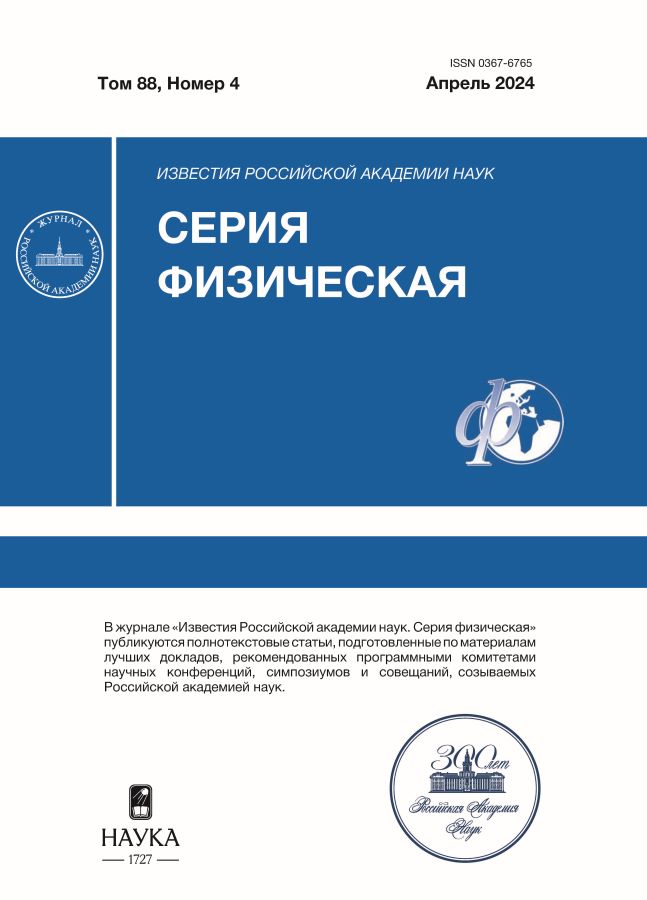Study of the physical properties of piezoelectric polyvinylidene fluoride – lead zirconate-titanate
- Авторлар: Savin V.V.1,2, Keruchenko M.A.1,2,3, Ershov P.A.1, Vorontsov P.A.1, Ignatov A.A.1, Rodionova V.V.1
-
Мекемелер:
- Immanuel Kant Baltic Federal University
- Center for Development of Gifted Children
- Lyceum No. 23, Kaliningrad
- Шығарылым: Том 88, № 4 (2024)
- Беттер: 668-672
- Бөлім: Magnetic Phenomena and Smart Composite Materials
- URL: https://cijournal.ru/0367-6765/article/view/654715
- DOI: https://doi.org/10.31857/S0367676524040209
- EDN: https://elibrary.ru/QGRTVM
- ID: 654715
Дәйексөз келтіру
Аннотация
We examined the impact of the percentage of lead zirconate-titanate microparticles as a filler in a polyvinylidene fluoride-based composite material on its mechanical, piezoelectric, and structural properties. Our findings revealed that the incorporation of 10% lead zirconate titanate particles resulted in an enhanced piezoelectric response due to a significant increase in the degree of polymer crystallinity for this concentration on the condition of conservation of the ultimate stresses value of the material in the acceptable range for the implementation of mechanical stress sensors.
Толық мәтін
Авторлар туралы
V. Savin
Immanuel Kant Baltic Federal University; Center for Development of Gifted Children
Хат алмасуға жауапты Автор.
Email: savin_vv@bk.ru
Ресей, Kaliningrad, 236041; Ushakovo, 238322
M. Keruchenko
Immanuel Kant Baltic Federal University; Center for Development of Gifted Children; Lyceum No. 23, Kaliningrad
Email: savin_vv@bk.ru
Ресей, Kaliningrad, 236041; Ushakovo, 238322; Kaliningrad, 236000
P. Ershov
Immanuel Kant Baltic Federal University
Email: savin_vv@bk.ru
Ресей, Kaliningrad, 236041
P. Vorontsov
Immanuel Kant Baltic Federal University
Email: savin_vv@bk.ru
Ресей, Kaliningrad, 236041
A. Ignatov
Immanuel Kant Baltic Federal University
Email: savin_vv@bk.ru
Ресей, Kaliningrad, 236041
V. Rodionova
Immanuel Kant Baltic Federal University
Email: savin_vv@bk.ru
Ресей, Kaliningrad, 236041
Әдебиет тізімі
- Omelyanchik A., Antipova V., Gritsenko C. et al. // Nanomaterials. 2021. V. 5. No. 11. P. 1154.
- Xia W., Zhang Z. // IET Nanodielectr. 2018. V. 1. No. 1. P. 17.
- Du X., Zhou Z., Zhang Z. et al. // J. Adv. Ceram. 2022. V. 11. No. 2. P. 331.
- Pei J., Zhao Z., Li X. et al. // Mater. Exp. 2017. No. 3 (7). P. 180.
- Yuan C.X., Zhang C., Xiao et al. // Ceram. Int. 2023. V. 49. No. 17A. P. 28474.
- Asghar A.H., Qaseem A., Alam W., Akhtar M. // Proc. IBCAST 2022. (Murree Hills, 2022). P. 1.
- Li S., Bhalla A., Newnham R. Cross L. // Mater. Lett. 1993. V. 1–2. No. 17. P. 21.
- Sobolev K., Kolesnikova V., Omelyanchik A. et al. // Polymers. 2022. V. 14. P. 4807.
- Maccone P., Brinati G., Arcella V. // Polymer Eng. Sci. 2000. V. 40. No. 3. P. 761.
- Zhang Y., Xue D., Wu H. et al. // Acta Mater. 2014. V. 71. P. 176.
- Janakiraman S., Surendran A., Ghosh S. et al. // Solid State Ion. 2016. V. 292. No. 9. P. 130.
Қосымша файлдар














